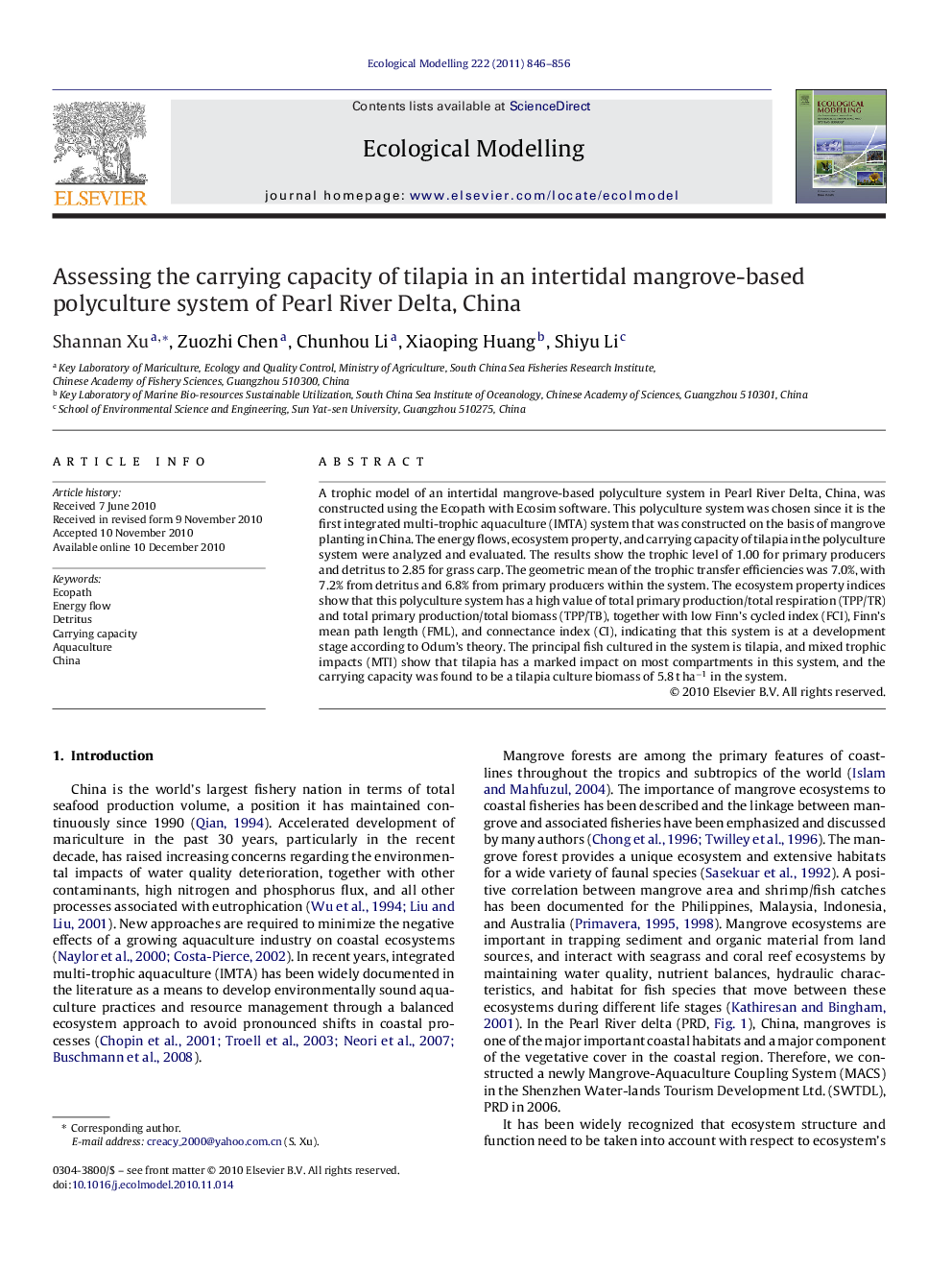| Article ID | Journal | Published Year | Pages | File Type |
|---|---|---|---|---|
| 4377030 | Ecological Modelling | 2011 | 11 Pages |
A trophic model of an intertidal mangrove-based polyculture system in Pearl River Delta, China, was constructed using the Ecopath with Ecosim software. This polyculture system was chosen since it is the first integrated multi-trophic aquaculture (IMTA) system that was constructed on the basis of mangrove planting in China. The energy flows, ecosystem property, and carrying capacity of tilapia in the polyculture system were analyzed and evaluated. The results show the trophic level of 1.00 for primary producers and detritus to 2.85 for grass carp. The geometric mean of the trophic transfer efficiencies was 7.0%, with 7.2% from detritus and 6.8% from primary producers within the system. The ecosystem property indices show that this polyculture system has a high value of total primary production/total respiration (TPP/TR) and total primary production/total biomass (TPP/TB), together with low Finn's cycled index (FCI), Finn's mean path length (FML), and connectance index (CI), indicating that this system is at a development stage according to Odum's theory. The principal fish cultured in the system is tilapia, and mixed trophic impacts (MTI) show that tilapia has a marked impact on most compartments in this system, and the carrying capacity was found to be a tilapia culture biomass of 5.8 t ha−1 in the system.
